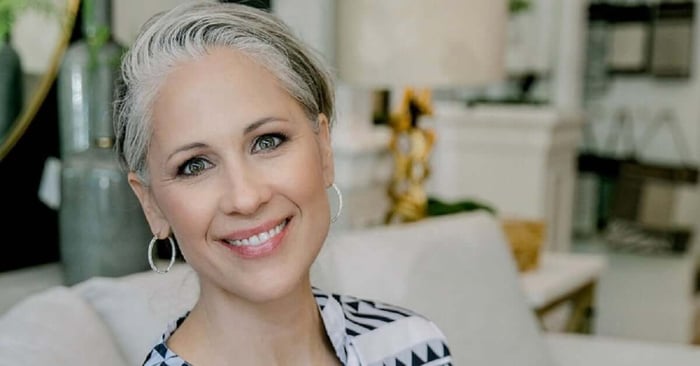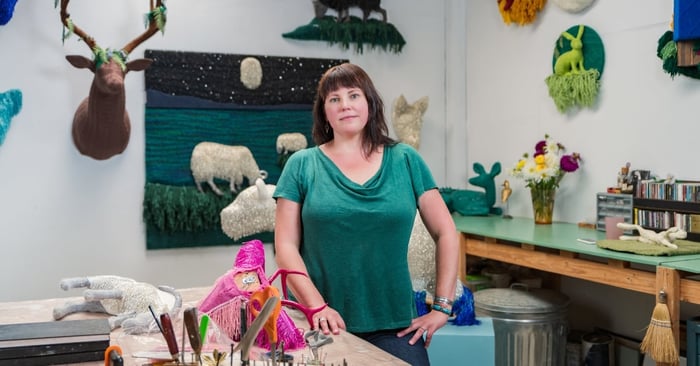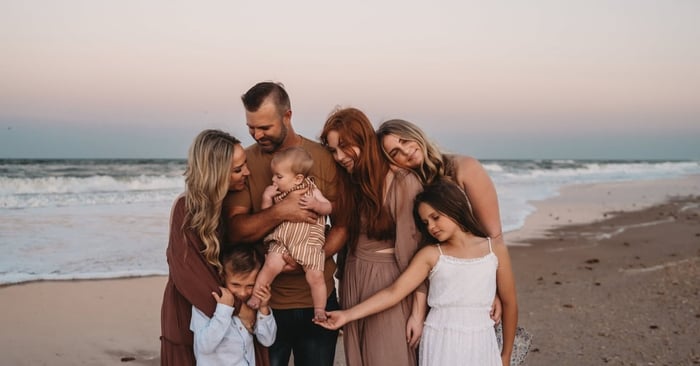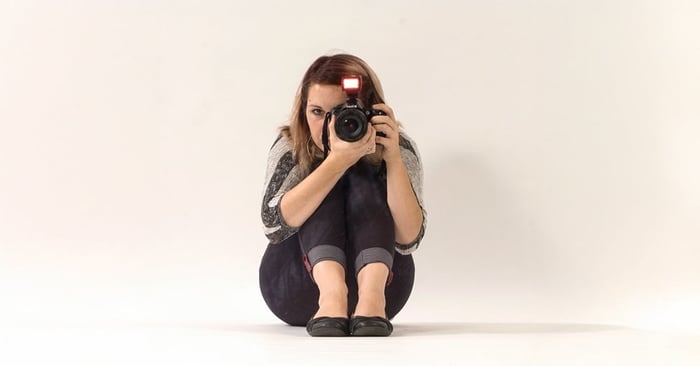Table of Contents
- How did you first find your way into the design field?
- That’s amazing.
- How did you come to start Sarah Coe Design?
- How did you find your way to Glen Ellyn?
- Can you tell me a bit more about the early days of Sarah Coe Design here? Do you have a memorable first project that stands out?
- I know you cover every step of the process from construction to curation and sourcing. How does that impact the design process and why is that important to you?
- Style is important, but there’s function there too.
- Along with functional, how would you define the Sarah Coe Design aesthetic?
- I think that can be something designers or artists struggle with– over decorating. Do you find it easy to know when to stop, or was that something that came with experience?
- You work on such a wide range of projects from outdoor patios, to home offices, to teen bedrooms. Do you find you approach the process differently per project?
- How would you describe the design scene here? Have you noticed any trends that are happening in Glen Ellyn?
- You’ve been at this for over 22 years. Does a successful project look different now than when you first started?
- What’s on the horizon for Sarah Coe Design?
- That sounds incredible. Having opportunities like that, and all of this experience now, do you have any advice you would give to someone who is just starting out?
Sarah Coe is a Midwest based interior designer and the founder of Sarah Coe Design. Located in Glen Ellyn, Illinois, she specializes in remodeling projects and luxury design. We had the pleasure of sitting down with Sarah to discuss her background in the field, her cross-functional approach, and how to navigate the industry by finding what you love.
How did you first find your way into the design field?
My mom was a very intentional parent, and she spent a lot of time figuring out what myself and my siblings enjoyed doing. She encouraged us to seek that out as a career path. If we could do something that we loved, we would be more satisfied in our careers.
I was a creative child, and I would always rearrange my bedroom. I remember the first thing I ever purchased with my own money was a botanical piece of art! On my mom’s side, my grandma was an artist–she didn’t have a degree in architecture, but she would draw plans that my grandfather would have built. On my dad’s side, my grandfather was a trade carpenter.
That’s amazing.
I grew up with all of this around me, but I was also in a very small town, where I didn’t know that interior design was a career. I went to Taylor University in Indiana, pursuing art and thinking about teaching. I did a lot of job shadowing there. One of the places I shadowed was for a graphic designer. The best thing that he said was, ‘“I wish I would have taken more business classes in school.” At that point, I switched my education minor to marketing, which suited me extremely well.
The fourth place I shadowed, the spring of my senior year, was for an interior designer. That was it. I was like “this is amazing!” I ended up interning for an interior decorator right after college, and she encouraged me to take local classes to gain certifications. That, on top of my art background, served me very well.
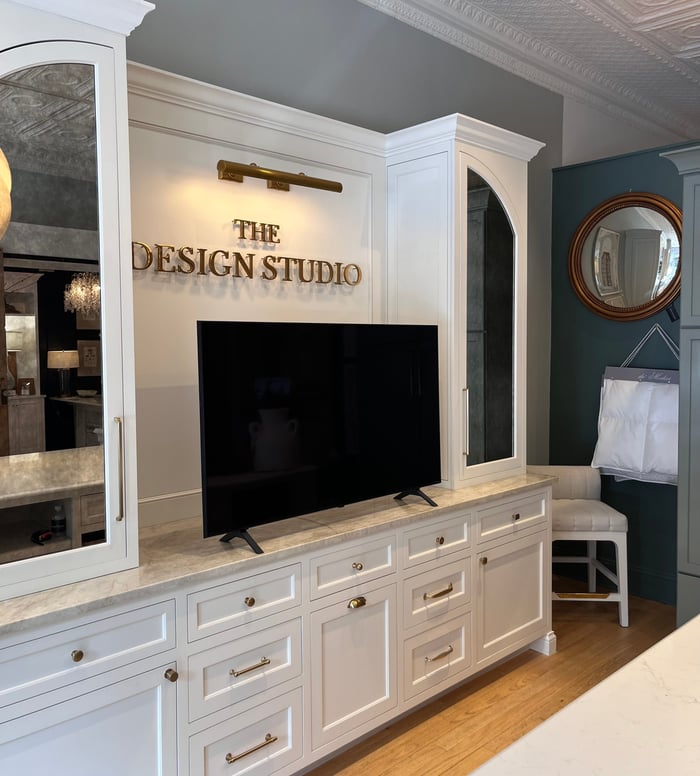
How did you come to start Sarah Coe Design?
I worked for this decorator for a while, and really gained a lot of confidence and experience. I’m 23 years old at this point, and she says “you can work for me, but you have to open your own business. I’m not paying you enough.” In hindsight, I can’t believe she did this, but it was phenomenal. So at 23 years old, I registered with the state and created my own business name, which hasn’t changed in 22 years! This all started in Indianapolis.
How did you find your way to Glen Ellyn?
In 2016, my family moved up here. With kids and the move, I wasn’t sure if I wanted to keep doing this, so I took a year off. When we moved, we bought an older, smaller home and remodeled it. During the course of remodeling, we had neighbors slipping notes into our mail slots saying “I love what you’ve done with your house. Will you help me?”
Very organically, I started working out of my house, and I hired someone to handle bookkeeping and sourcing. It more than boomed. Within a year, I sourced this studio space. In 2018, we added the retail component too, which has been a really fun element. Now in 2025, our business has just grown exponentially. I have a team of six, including me, full time. Five designers and an office manager.
Can you tell me a bit more about the early days of Sarah Coe Design here? Do you have a memorable first project that stands out?
A client had come to us, and they actually wanted me to step in and help them find their next home– then redo it for them. They were ready to build what would have been, at the time, the most expensive home in Glen Ellyn, but eventually decided they wanted to find a well-suited house they could remodel. So they asked if I would help them find a house- which was really fun!
I got to look at these houses and say “in this house, it’s going to be easier to tear down the walls. This will have a big entertainment space…” That was a fun project. The client had a lot of trust in us, which is the best.
I know you cover every step of the process from construction to curation and sourcing. How does that impact the design process and why is that important to you?
You have to know things, like where you’re putting outlets, for example. Code will tell you how many you need, but you really have to think all the way down to how the space will be used, or where the furniture is going to be placed. I think the thing that’s so beneficial about us, and designers who understand the whole process, is sometimes we don’t even need an architect because we’re drawing the interior plans.
Because I’m also a mother of teenagers and come from a big family that entertains, I understand how a space will be used. Maybe you’re working on a smaller kitchen for two empty nesters, but you’re also giving them space for entertaining when kids and grandkids come over. There’s a very personal and deep understanding that goes into the whole process, and I think that makes us good at what we do.
Style is important, but there’s function there too.
High function. Even though our designs look really pretty, I’m all about performance fabrics. If it doesn’t hold up, it doesn’t really work. Sometimes you see things online that look beautiful, but when you dig into it a little, it’s completely impractical. I remember I saw a range hood that was improperly installed by a designer, and the home owner couldn’t even reach the hood to turn it on and off– so just because something looks nice, doesn’t mean it’s functional!
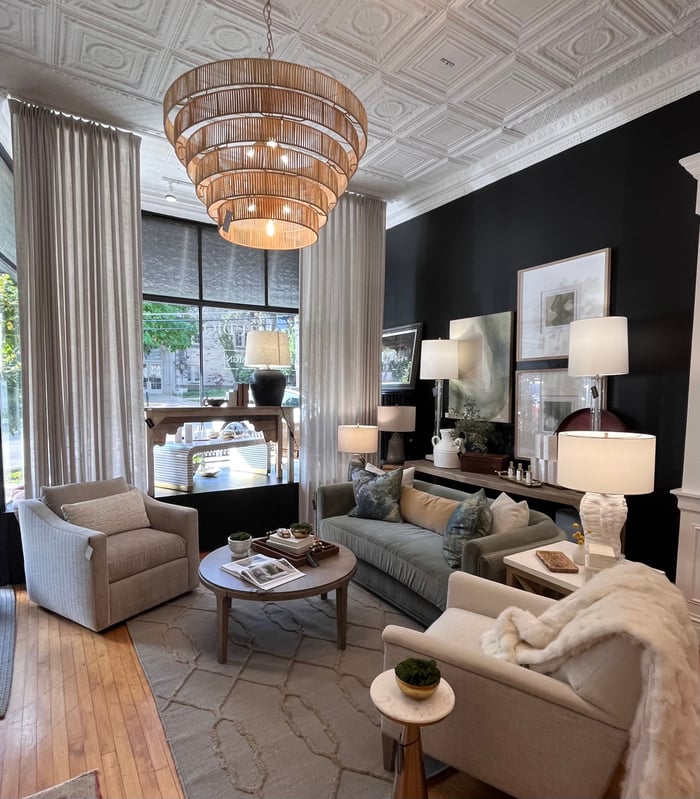
Along with functional, how would you define the Sarah Coe Design aesthetic?
Our design is very personal. Maybe I don’t like red, but red is your favorite color. If that’s important to you, I want to make sure you’re comfortable living in your designed home.
We typically go for a classic, timeless look. I’m not opposed to trends, but we have to be careful with trends, especially when we’re spending a lot of money. I’m probably more on the simple, clean side. I’m not someone who’s going to overfill with a lot of accessories or artwork. There needs to be a space for your eye to rest. You don’t have to style every single surface.
I think that can be something designers or artists struggle with– over decorating. Do you find it easy to know when to stop, or was that something that came with experience?
Everybody has a different level of comfort. Some people are actually uncomfortable with less, so I have to push my comfort zone a little to add more to a space and meet their level of comfort. Right now, we’re designing one of the most expensive kitchens we’ve done. For these clients, more is more. They love patterns and texture.
So how can we add some of that to a kitchen? It could be using roman window treatments that might have a pattern. I’m known to use a lot of mirrors. I love them because they add a layer of depth and make light bounce around the room. It’s just about asking really good questions and understanding what the client is looking for.
You work on such a wide range of projects from outdoor patios, to home offices, to teen bedrooms. Do you find you approach the process differently per project?
There are 5 design steps we follow with every project. It’s outlined on our website, but it takes you from consultation to installation. This keeps us organized and gives our clients an idea of what to expect. At the end of the day, it has to come down to function. Still, you wouldn’t approach an outdoor space the same way you’d approach a kid’s bedroom, and that’s the fun of it. We also work on commercial projects – we probably do one every other year. We’ve done optometry offices, churches, restaurants… Those are really fun. You really get to stretch your design muscle and think outside of the box. It’s like “what can we do here that we couldn’t do in a residential space?”
How would you describe the design scene here? Have you noticed any trends that are happening in Glen Ellyn?
I get to go to markets once or twice a year, and that is super valuable because I see the trends that are coming down the pipeline that will go mass market in the next six months to a year. We get to see what’s trending in our whole environment and industry.
Typically, the Midwest is pretty traditional, but because we’re close to Chicago, we do get clients that are comfortable leaning more contemporary.
One of the biggest trends that’s been happening for a while is this concept of “indoor/outdoor.” I think it was, in part, a result of Covid. Everybody was indoors and realizing they were missing something valuable in the outdoor experience. With our patio project, for example, all of that looked like it was indoor furniture, even though it was fully upholstered outdoor furniture. People want to have the comfort of being indoors, even when they’re outside. And when they’re indoors, they want to feel like they’re outdoors.
You’ve been at this for over 22 years. Does a successful project look different now than when you first started?
22 years ago I couldn’t do the same kinds of projects I do today, so the scale is different. But my team and I did a practice recently where we talked about characteristics of an ideal client. The characteristics of a good experience are the same: working with someone who is kind – it sounds kind of silly that that would be the first thing– but that also looks like being respectful and trusting.
Sometimes clients have high roles in their professional lives, or they may be CEOs. They’re the best at what they do, but that doesn’t mean they’re the best at everything. It’s important to have someone who is trusting and has an open mindset. I want their spaces to reflect them, but I also want them to be open to other options that they wouldn’t have thought of.
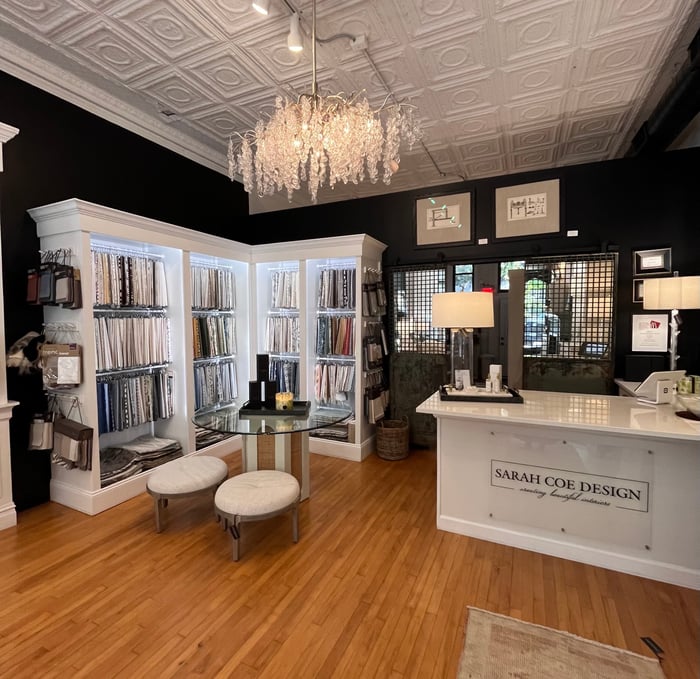 What’s on the horizon for Sarah Coe Design?
What’s on the horizon for Sarah Coe Design?
Something very exciting is that my family has purchased a 100-year-old house here in downtown Glen Ellyn. We’re not only gutting it from the inside out, but we’re also doing an addition, and the company is managing that addition. So the company is growing from remodeling and sourcing to actually becoming a builder. That’s really exciting. I’ll be sharing this journey on social media too, which is both completely terrifying and very exciting. It’s not going to look super DIY– you’re not going to see me out there laying my own tiles. Even though I'm the designer, I still have a budget, and there will be a very real component there. But it’s fun because I get to work with my own team of talented designers as we go about this. I also get to work with a challenging client– my husband– who has his own ideas too. It’s a very exciting time.
That sounds incredible. Having opportunities like that, and all of this experience now, do you have any advice you would give to someone who is just starting out?
So much advice! Try to spend some time shadowing other people. In our industry, there are so many different components to what we do. Not everybody should own their own design firm. I will tell you, hands down, it is the hardest thing I’ve ever done in my life. It’s even hard 22 years later. It takes a specific skillset to be a business owner. Some people might love CAD (computer-assisted design software), some people might love sourcing. It takes some experience, but figure out what you love doing.
Then outsource the things that you don’t want to do - even at the beginning. A couple months into starting my business, I realized I hate numbers and invoicing, and I hired a bookkeeper. If I had to do all of that, I wouldn’t still be in business. Even early on when I wasn’t making a lot, I knew that was essential for me. It’s about understanding what you really love doing and what you don’t love doing in the industry. Then continually pursue the things that you love.
Follow along with Sarah’s 100-year-old home restoration on Instagram. For more information visit Sarah Coe Design online.
